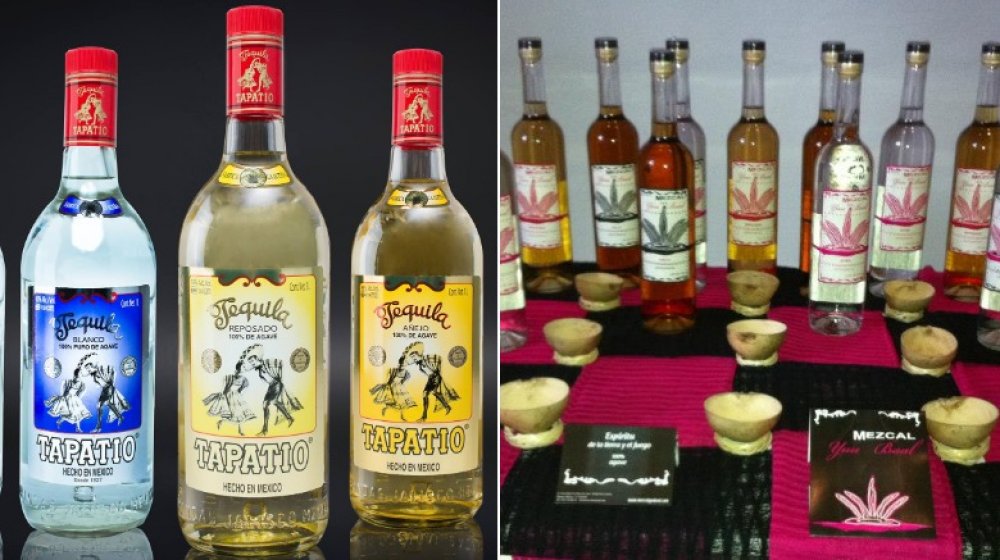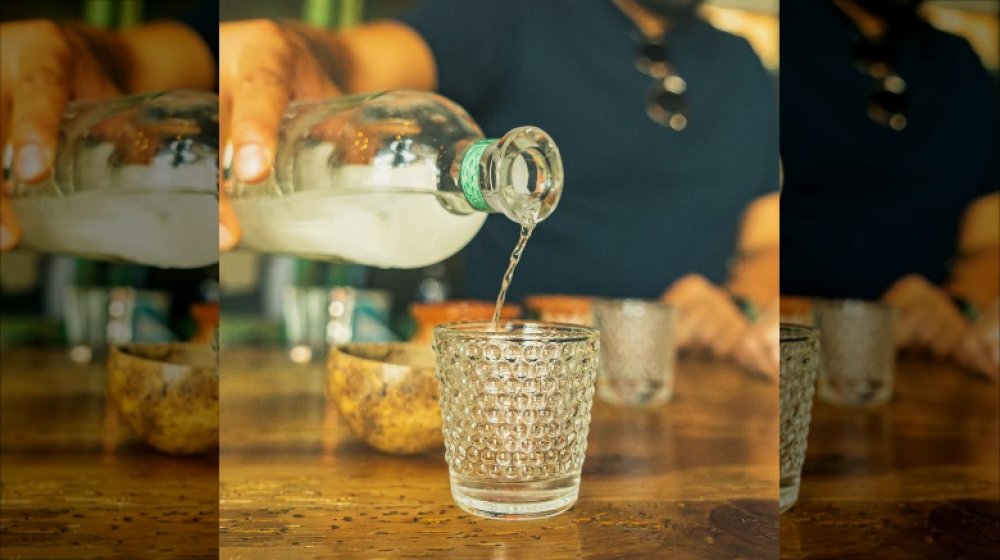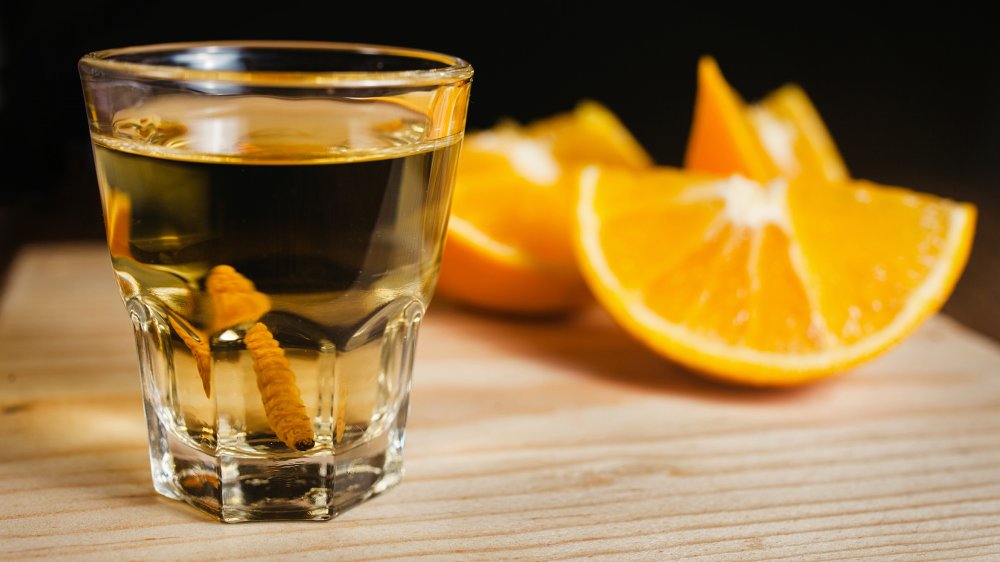What Is The Difference Between Tequila And Mezcal?
Tequila has been around as far back as we can remember — it's one of the main clear spirits found on every bar rail, along with rum, gin, and vodka, although there are also numerous top-shelf varieties both darker in color and more complex in flavor due to aging. Whether it's been hidden in a Long Island Iced tea, played a more prominent role in a margarita, or been served up straight with a salt and lemon chaser, chances are, if you've whiled away any of your misspent youth hanging out in bars, you've encountered tequila in some form.
Lately, however, as craft cocktails become increasingly popular, you may be starting to see mezcal on your snootier type of bar menu. So what is mezcal, anyway? Is it just some upmarket name for tequila, or are the two actually different types of liquor?
The short explanation, according to Wine Enthusiast (which manages to drum up a little enthusiasm for spirits other than wine), is that tequila is a type of mezcal, but not all mezcals are tequila. Both are produced from the agave plant, but mezcal can come from any of 50-some varieties of said plant, while tequila comes from only one: Weber blue agave, which is also known as agave tequilana Weber for all of you botanists and Latin speakers.
The flavor difference between tequila and mezcal
While we've established that yes, technically tequila is a type of mezcal, generally when you encounter mezcal on a bar menu, it refers to some other type of mezcal. The agave that goes to produce tequila is usually steamed, while agave used to produce other types of mezcal may be pit-roasted — this process is what gives many mezcals their characteristic smoky flavor.
As Saucey describes it, mezcal is to tequila as Scotch is to whiskey — although actually the opposite is true if you consider that Scotch is a type of whiskey just as tequila is a type of mezcal.
Food & Wine shares the fact that tequila is primarily produced in five different regions of Mexico: Jalisco, Nayarit, Michoacán, Guanajuato, and Tamaulipas. While the last three regions also produce mezcal, the latter liquor is also made in Durango, Guerrero, San Luis Potosi, Zacatecas, Puebla, and Oaxaca. In fact, 85 percent of all mezcal originates in Oaxaca. Although there are agave-based spirits produced outside of mezcal's nine official Denominacións de Origens (Dos), they cannot be labelled as mezcal, in much the way that bubbly produced outside France's pricy Champagne region is merely sparkling wine.
Mezcal and tequila are both best sellers
Tequila is still big business — George Clooney and partners sold their Casamigos brand for a cool billion in 2017, and tequila sales brought in $3 billion in revenue in 2018 alone. While mezcal's sales figures for the same year were a much smaller $90 million, these figures nevertheless represented a sharp rise in recognition for this once-obscure spirit. During that one year, U.S. mezcal consumption increased by 32.4 percent, and its popularity seems poised to keep on growing.
Oh, and one more word on the difference between the two spirits: the one with the worm? That's actually mezcal, not tequila (via Grunge). But the worm-averse need not worry — the whole bug-in-the-bottle deal was dreamed up as a marketing gimmick. Now that mezcal's gone upscale, the best brands won't need to resort to such cheap tricks to get you to drink them.


